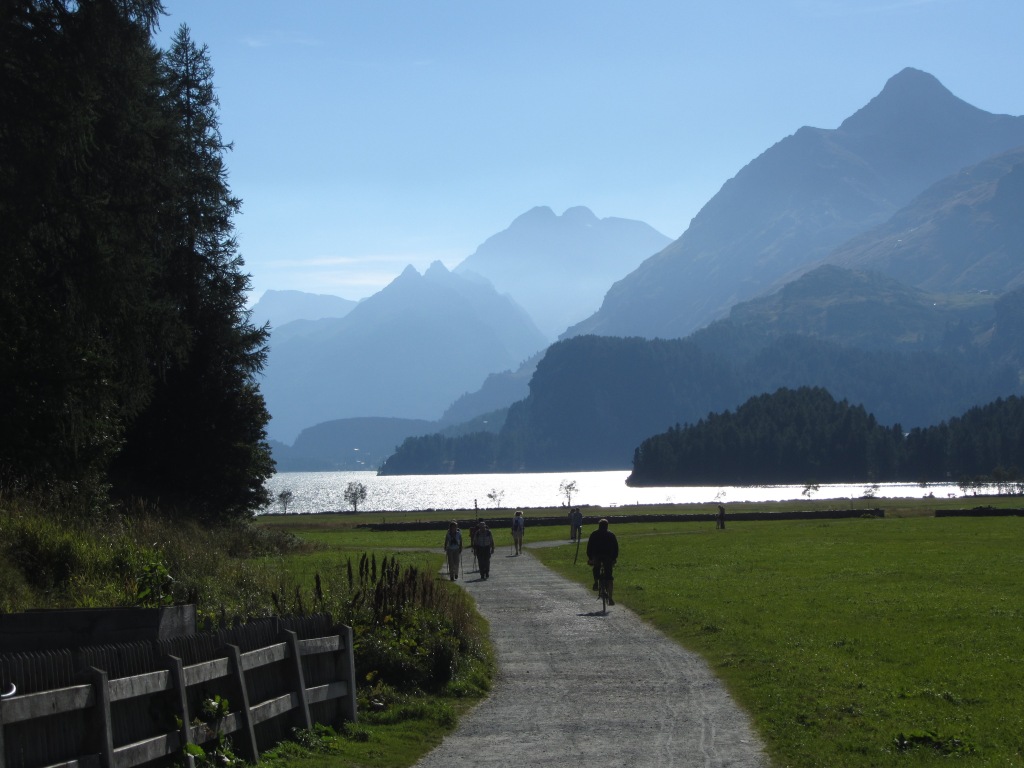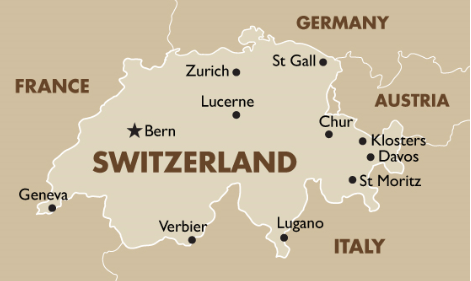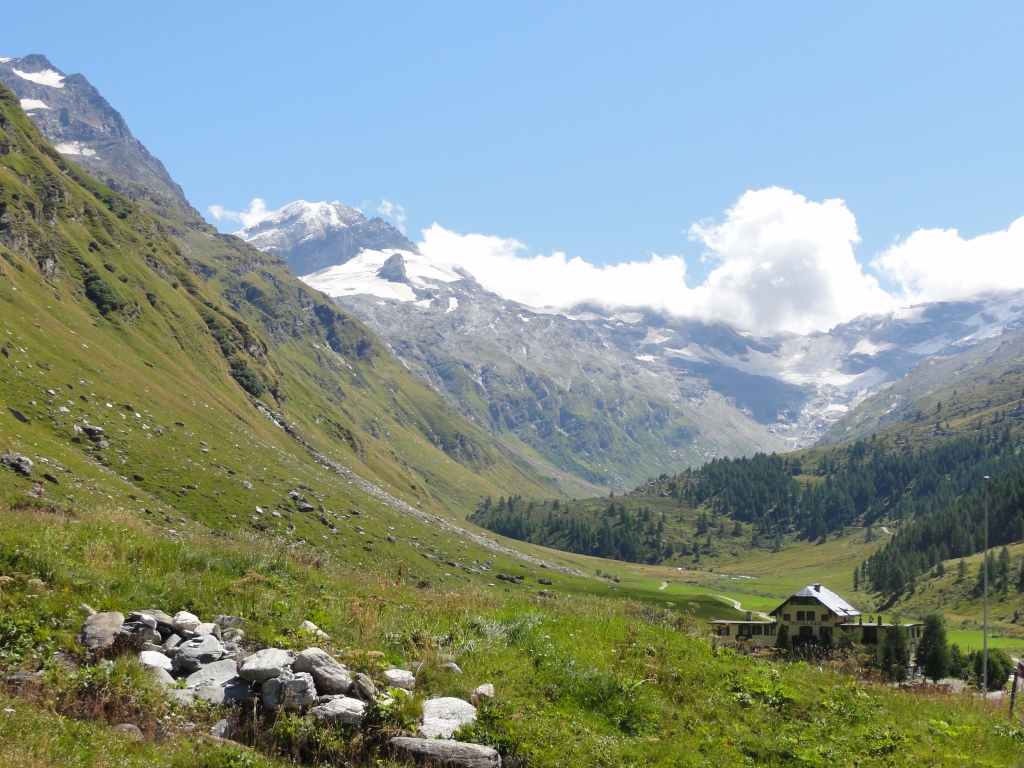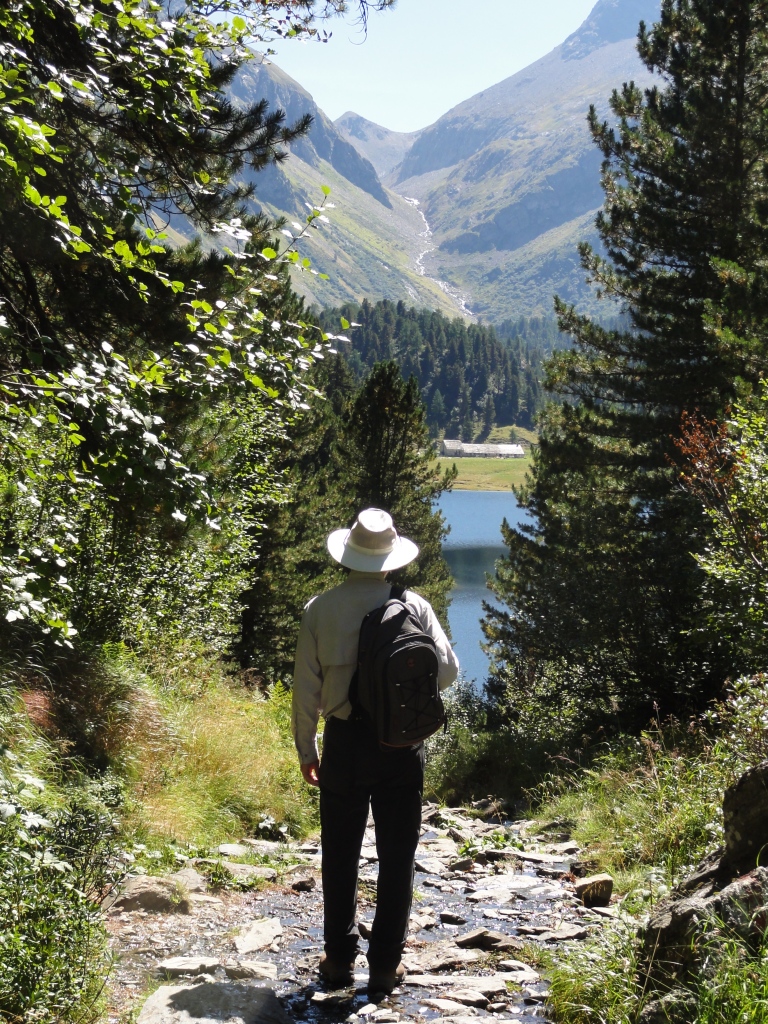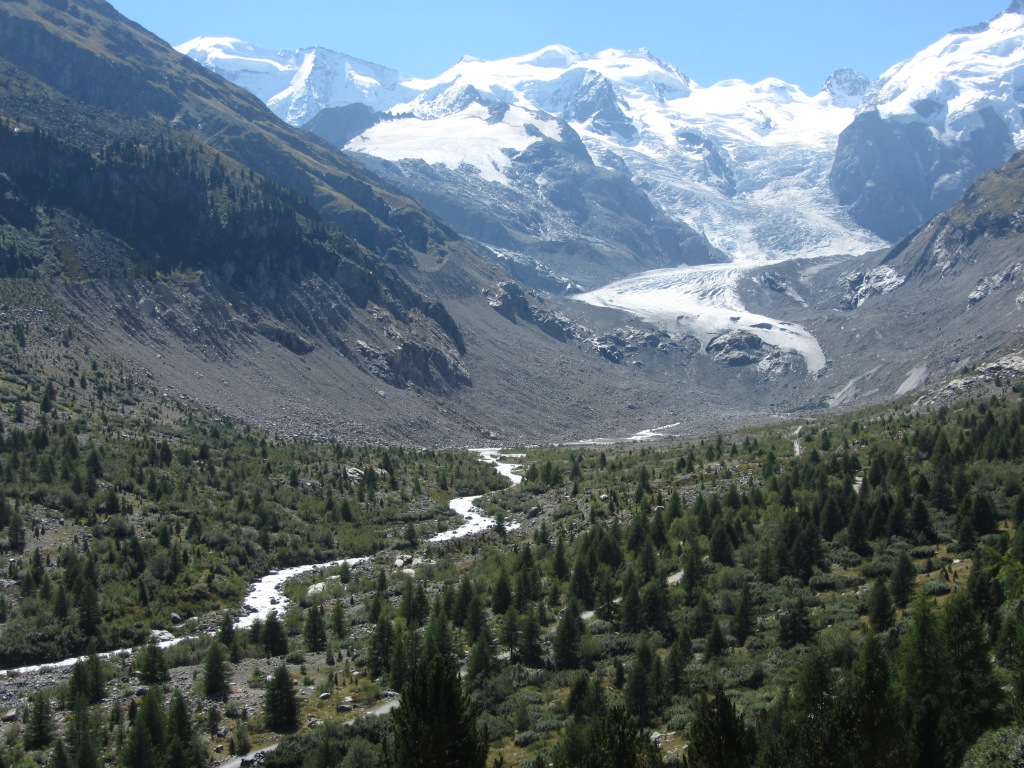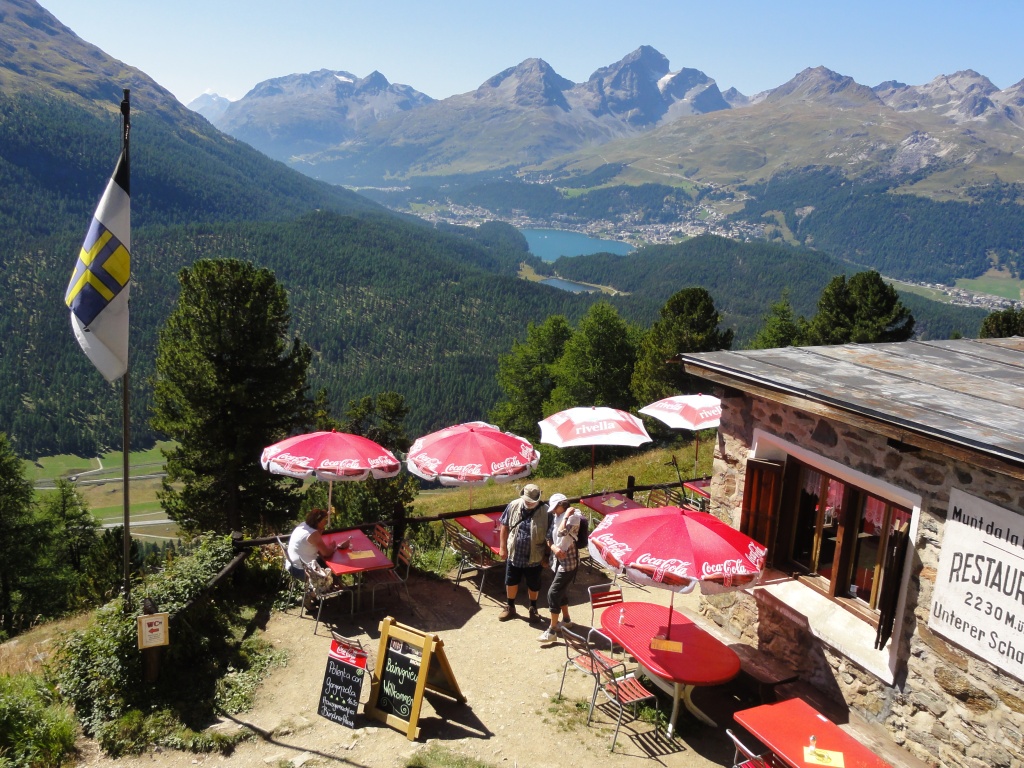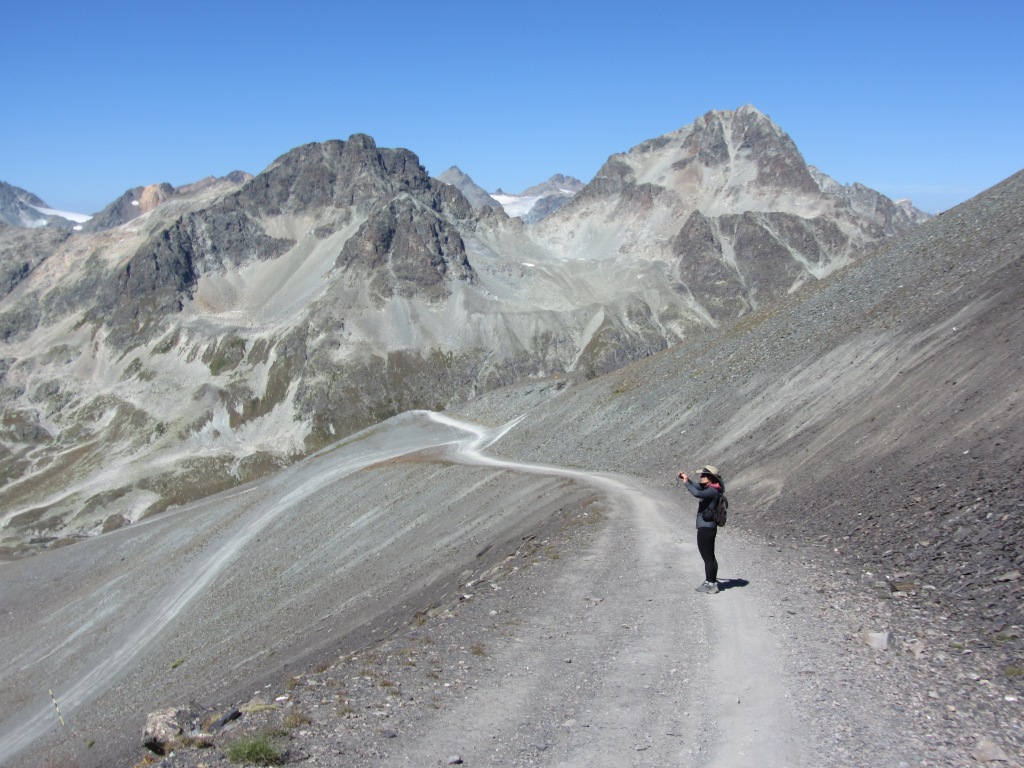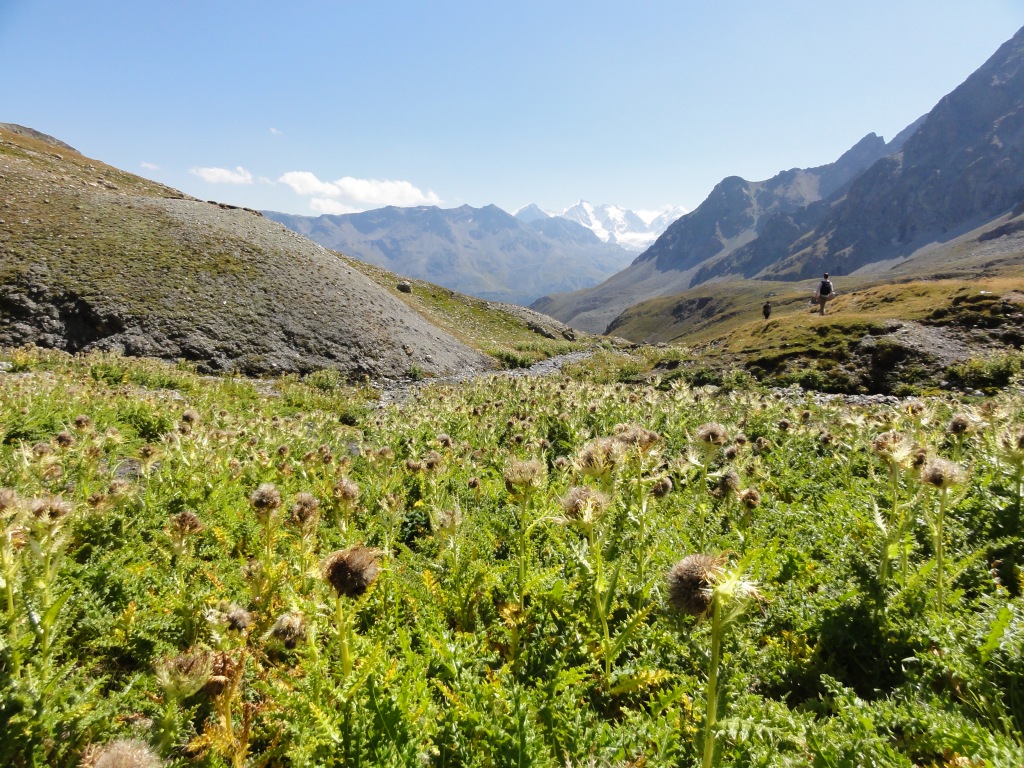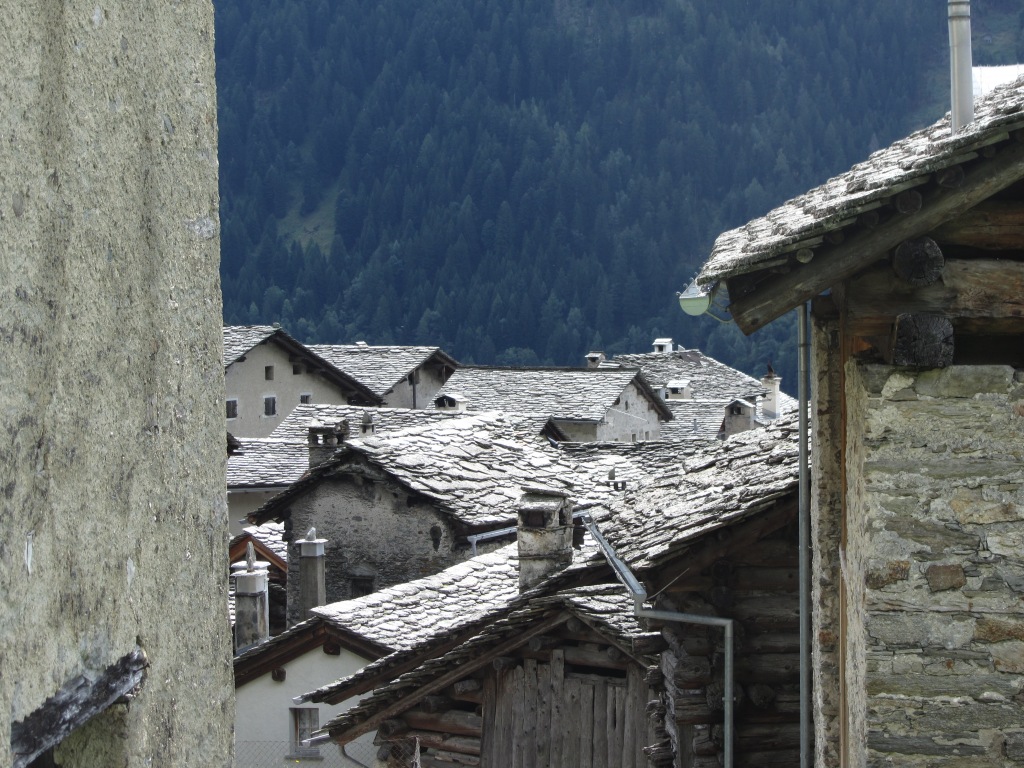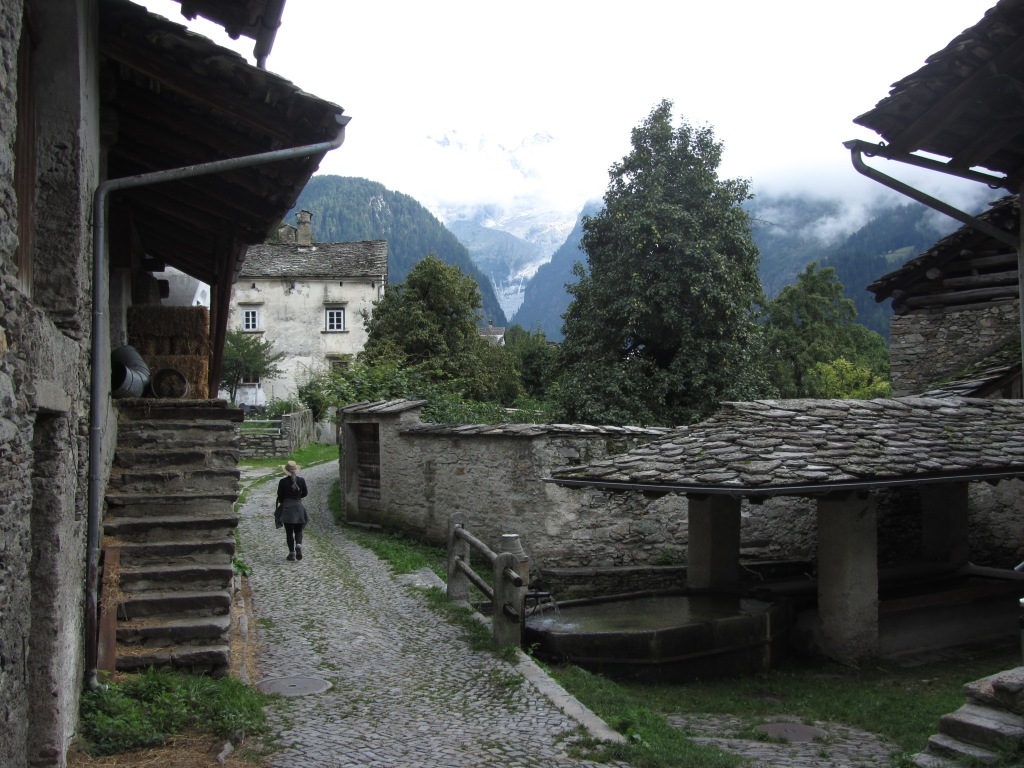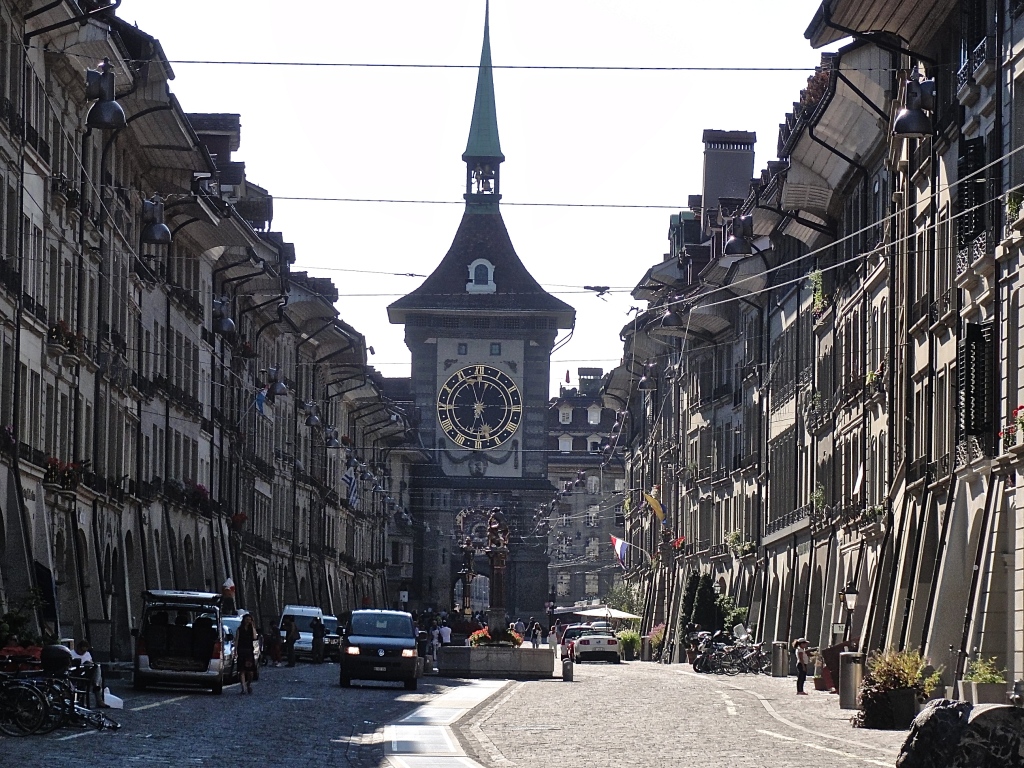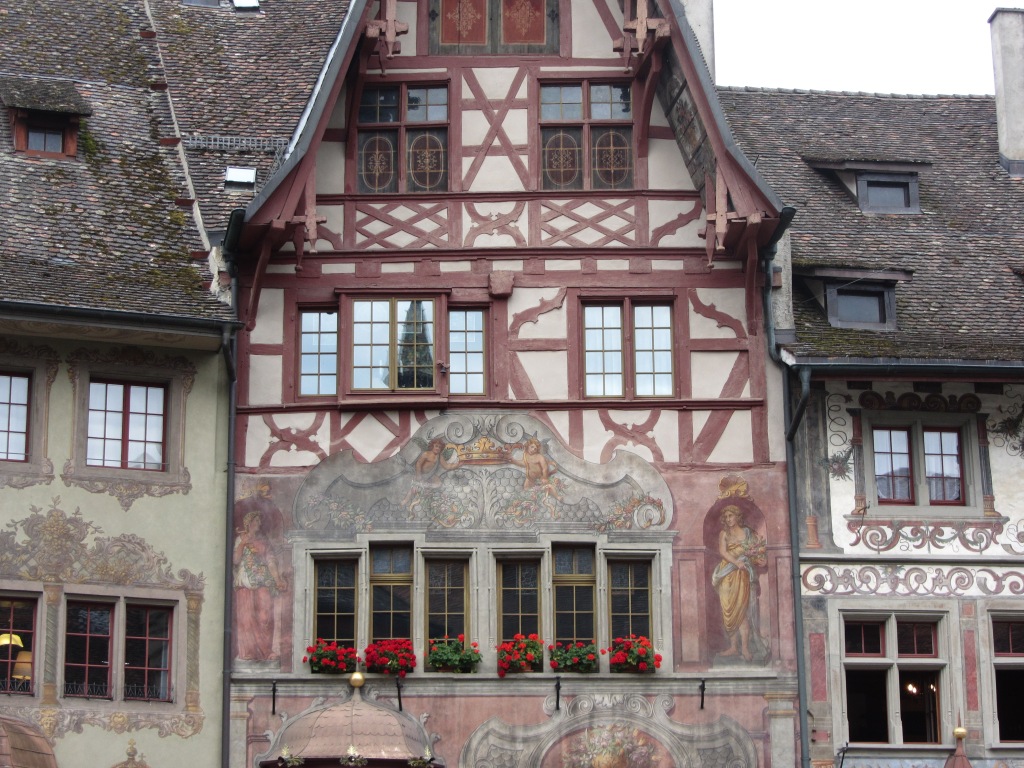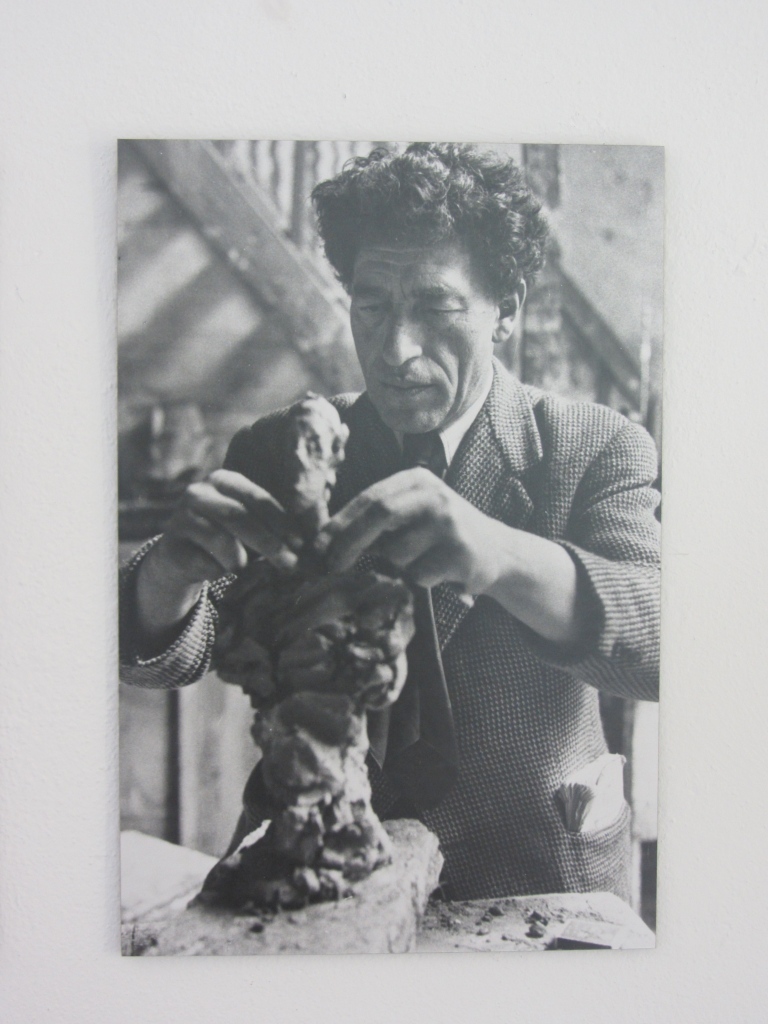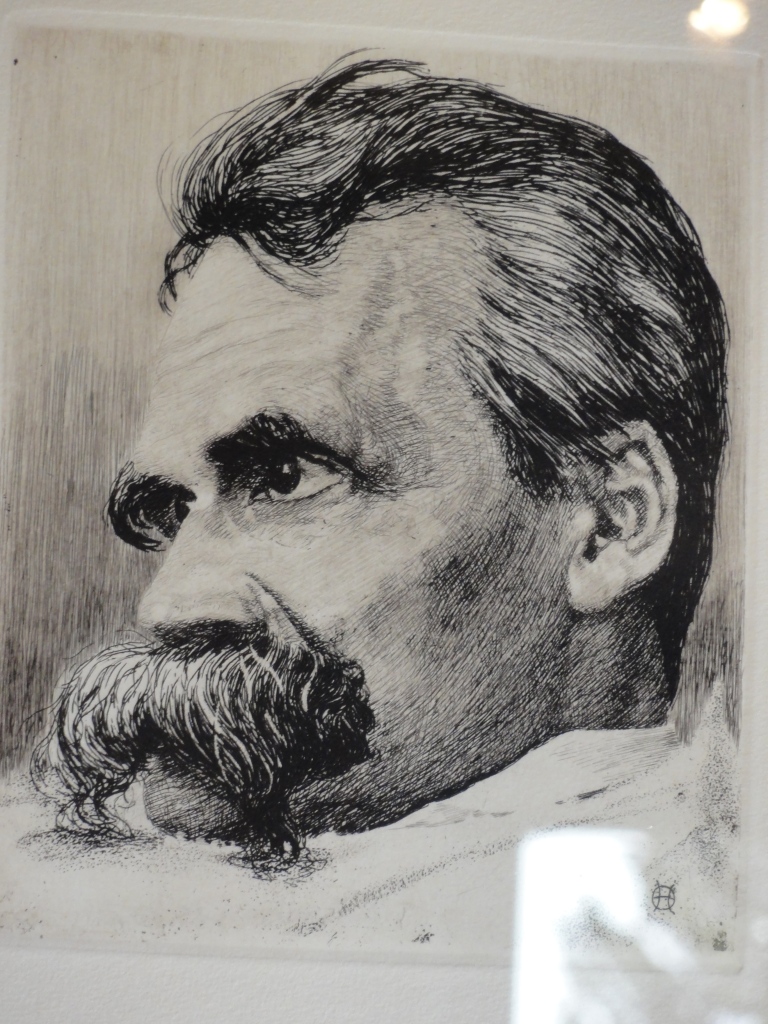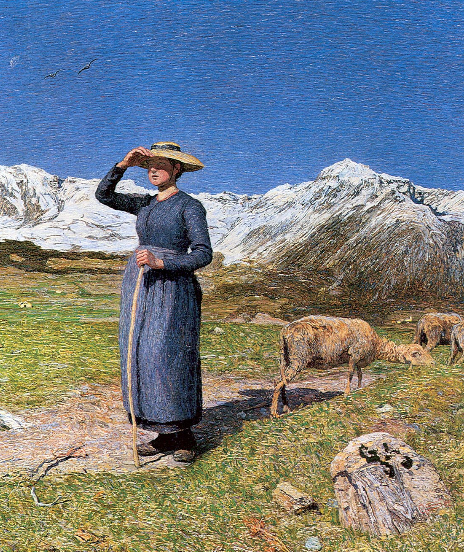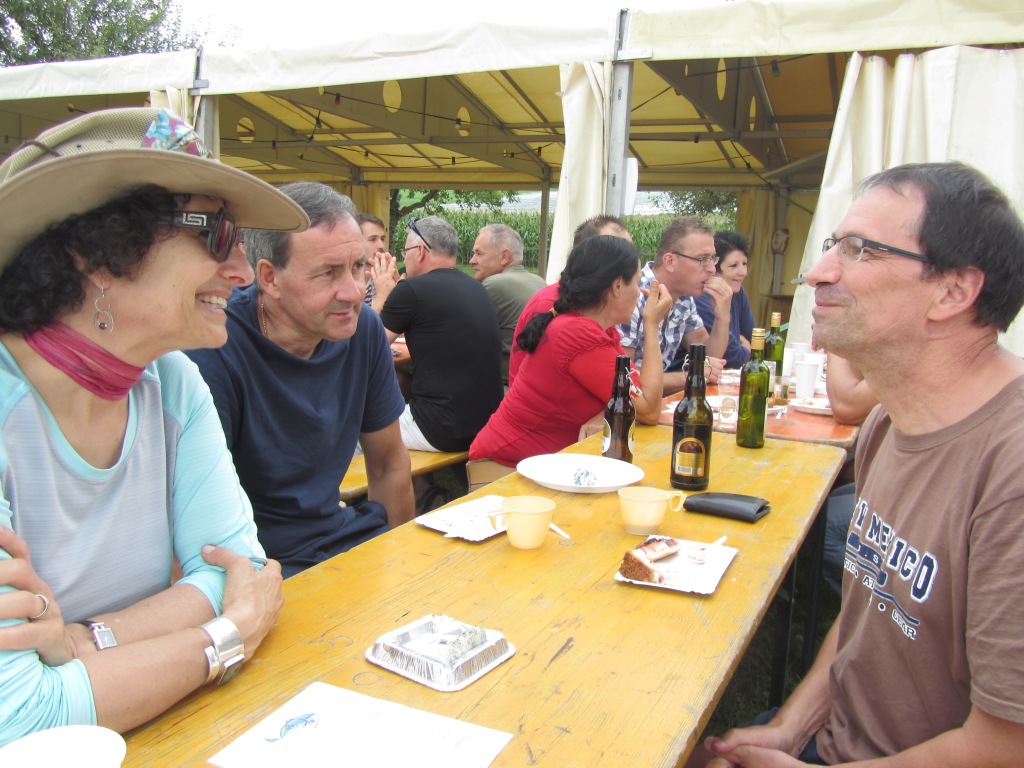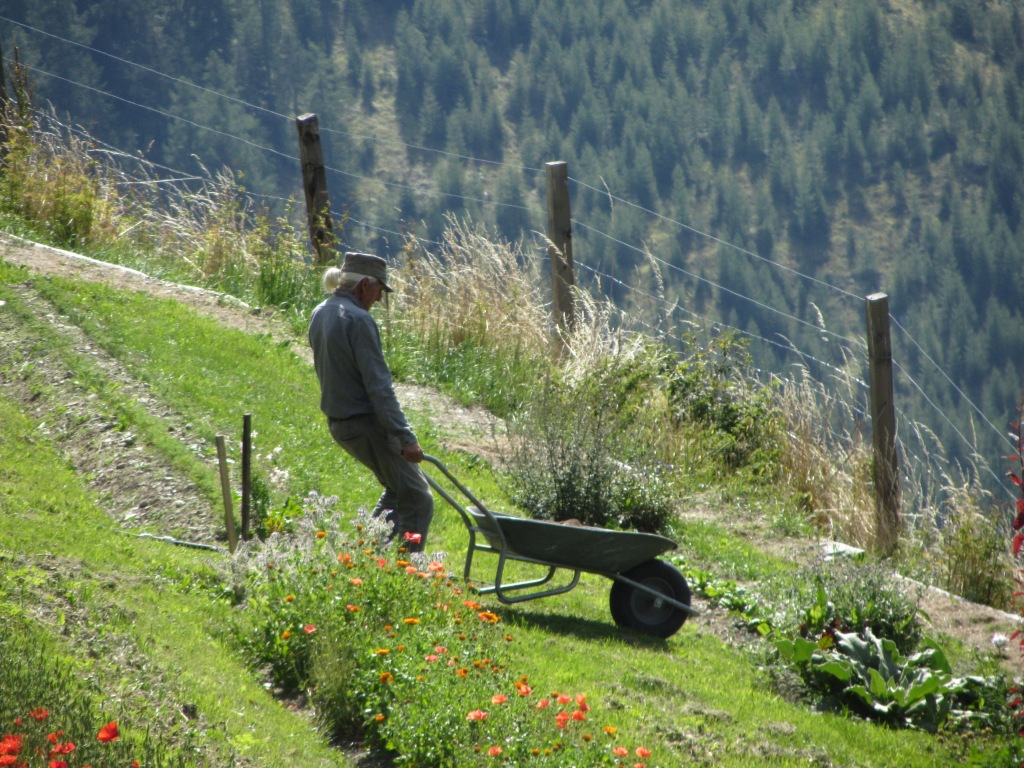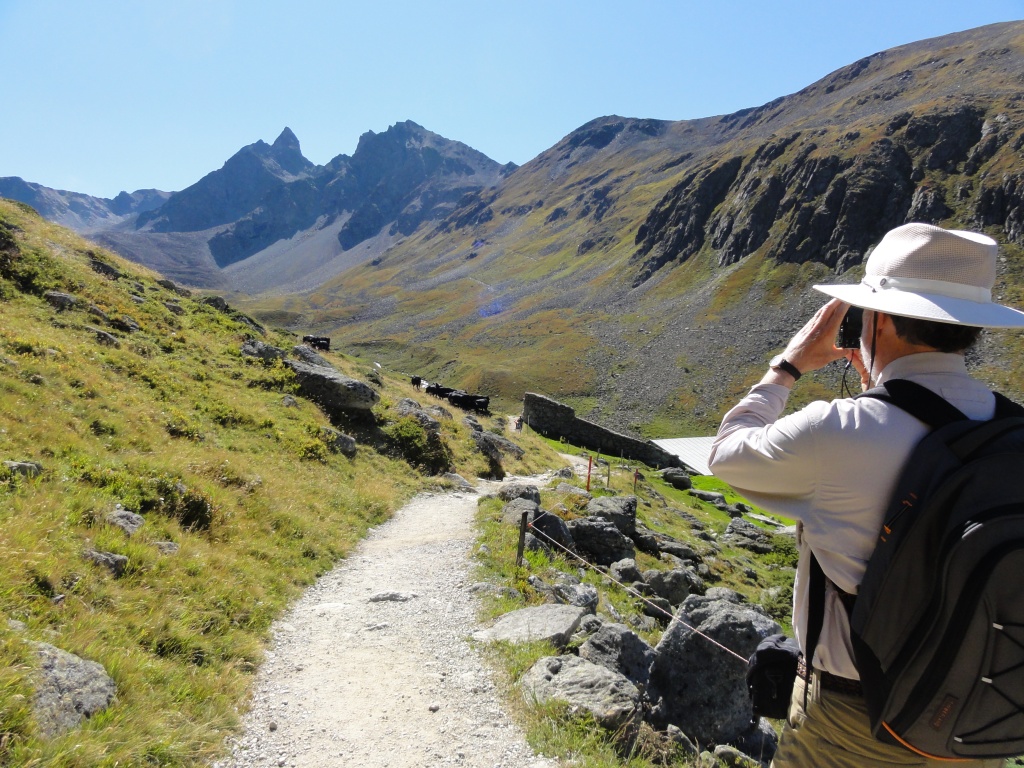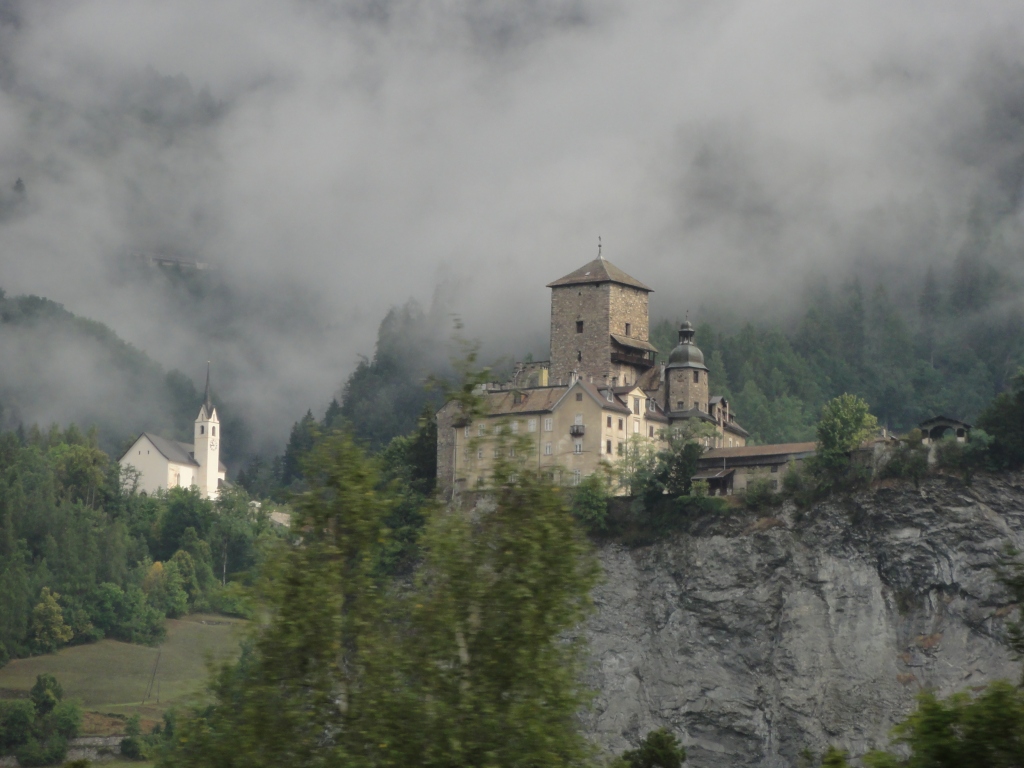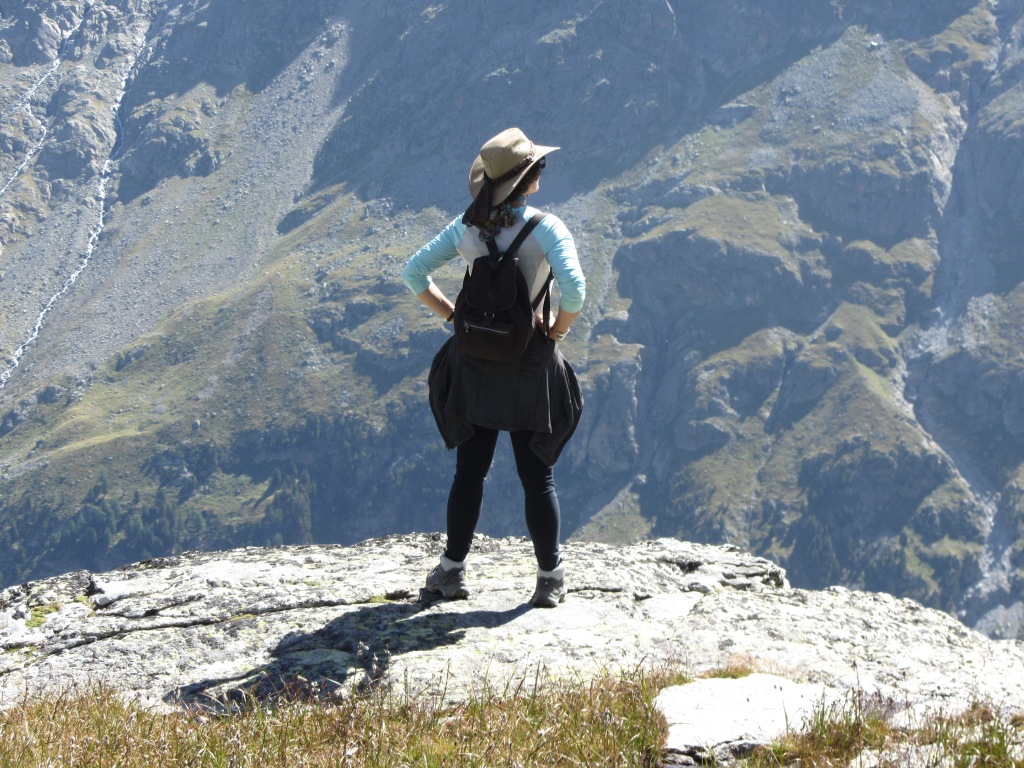Much as we enjoy communing with nature by the ocean, we love being in the mountains — the physical exertion of hiking combined with the experience of seeing ancient formations and vistas always moves us to marvel at nature’s grandeur and beauty.
A late afternoon view of the walking path to Lake Sils, with several nearby high peaks (elevation: ~9,500 feet) flanking the shoreline in Sils-Maria. For five days, we stayed at an inn on the lake that was only a three-minute walk from this vantage point.
To mark our 60th birthdays this year, we decided to experience nature by going hiking in the Swiss Alps — specifically, in the southeastern corner of the country between St. Moritz and the Italian border known as the Engadine.
The Engadine (which means “valley of the river Inn”) is a 60-mile long valley surrounded by high peaks, mountaintop glaciers, waterfalls, lakes, remote villages, and wide and peaceful side valleys. It stretches along the border with Italy and follows the path of the Inn River as it flows from southwest to northeast towards Innsbruck in Austria.
Most people consider the Engadine a winter vacation destination for skiing, and even many Swiss consider it a bit off-the-beaten path for summer hiking. But as we found, there’s also a great hiking culture there. In fact, we crossed paths with active hikers of all ages throughout the area — and, in many cases, we definitely were the “young people” on the trails!
We arrived in the Engadine just before a glorious stretch of near-perfect hiking weather: sunny and in the high 60s/low 70s. That gave us a chance to do day hikes on seven straight days. Here’s a very small sample of what we saw.
A long climb up a series of steep switchbacks brought us to the Val Fex, a lovely valley of scattered settlements and high pastures. We followed a stream bed for three miles up the valley to a restaurant at the Hotel Fex (lower right) .
Another trail with steep switchbacks brought us to two mountain lakes: Bitabergh and Cavloc. The approach to Lake Cavloc, shown below, crossed many small waterfalls and glacial streams that fed the lake.
A ride up a cable car and then a hike across a moonscape of rubble brought us to the plateau at Fuorcula Surleij, where the trail descended and then opened up to this majestic view of the Vadet da Tschierva glacier. We also caught a brief glimpse of a golden eagle circling and soaring across the valley.
The hike to Morteratsch Glacier (below) crossed a two-mile long valley that had once been covered by ice; signposts along the way showed how much the glacier had receded each decade (over two kilometers) since the 1890s. Today, new growth forests and rubble show where the glacier had once been.
The cable car ride up to Muottas Muragl offered great views towards Lake Sils and the neighboring peaks. We did a long panorama hike and had lunch at this mountain hut before we headed back down on a chair lift.
After riding two cable cars up to the 9,400 foot summit of Piz Nair, we descended the steep slope that passed through several “layers” of landscape: mountain scree and rubble near the summit, a gorgeous mountain lake near the Suvretta Pass, and faded grass and flowers along a glacial stream. For most of the nearly 2,000 foot descent, we had the trail to ourselves.
Our travels weren’t only about hiking, though. We also had brief glimpses of local culture, visited several small museums, and met some interesting characters along the way.
Architecture in the Engadine was an interesting mix of simple vernacular styles and more elaborate examples of buildings decorated with murals and even sgraffito, where the stucco surface is carved away to reveal a base layer color and design.
Starting in the hilltop community of Soglio (population: 167) in the Val Bregaglia near the Italian border, we did a village-to-village walk passing by many traditional stone houses with slate roofs.
Elsewhere in the Engadine, we saw beautiful examples of murals painted on houses and buildings. A favorite place for seeing this local style was in the hilltop village of Guarda (population: 170). Maybe because it was a weekday, we were among the only people walking around the village.
Exterior views of buildings in Guarda.
In the first part of our trip, we did day trips from Zurich to two UNESCO sights: the historic district of Bern (Switzerland’s capital) and the medieval center of Stein am Rhein.
A view of the Zytglogge clock tower (“Zytglogge” in Bernese German means “time bell”) in Bern’s historic district. Built in the early 1400s atop the base of a building constructed around 1220, the clock features mechanical figures that strike the main bell on the hour.
In Stein am Rhein, the medieval center has dozens of examples of half-timbered houses, many (like these) decorated with colorful murals.
On our travel day down to the Engadine, we had yet another UNESCO-listed experience — this section of the Rhaetian Railway is one of only three railways in the world listed in UNESCO. Many of the tunnels and bridges were built in rugged territory using state-of-the-art methods at the time. The Landwasser Viaduct, shown below, is nearly 200 feet high and was built in 1901-1902.
We also visited several museums during our travels. Here are a few examples.
An unexpected surprise in Bern was the small Einstein House Museum. We liked it because it told Einstein’s story, warts and all, in Bern and beyond. Among other things, we learned that he left home at an early age, gave up his citizenship, divorced his first wife, married a cousin, and had many professional setbacks before he finally succeeded with his theory of relativity.
The destination of our village-to-village walk from Soglio was Stampa, where there’s a small museum commemorating seven different artists from the Giacometti family, all of whom lived in this valley area. Pictured below is the most famous member of the Giacometti clan, the sculptor and painter Augusto Giacometti.
In Sils-Maria, we had a fascinating visit at the Nietzsche House, where Frederich Nietzsche spent time for health reasons. We learned that his sister married a racist and consorted with Hitler and that the Nazis twisted Nietzsche’s ideas about a “Superman” to justify their ideas about “the Aryan race.” A German Jew, Oscar Levy, dedicated much of his life to rebutting the Nazis’ misuses of Nietzsche’s works (he published a famous open letter to Hitler about that). A controversial character, Levy also became involved in extremist political causes and wrote highly critical pieces about Judaism and Christianity.
In St. Moritz, we visited the Segantini Museum, which holds the world’s largest collection of works by the artist. Segantini, who isn’t well known in the United States, was a versatile painter who had an amazing knack for capturing light and shadow and depicting rural life in the Engadine in the late 1800s with a very sympathetic eye.
On our return to Zurich, we visited the wonderful Landesmuseum that traces the history and culture of Switzerland. The displays put many of our experiences into context. For instance, the sobering presentations on World War II showed how the Swiss negotiated a special trade agreement with the Nazis and agreed to place the letter “J” on the passports of German Jewish refugees passing through Switzerland. The woman pictured below, Elsie Attenhofer, was the “grande dame” of the Cornichon Cabaret in Zurich in the 1930s, a group of artists and writers who staged satirical plays as an act of protest against fascism and the rise of the Nazis in Germany.
Finally, we met many fine people and an assortment of characters as we traveled around the country. Here are a few of the people we met along the way.
In Zurich, we attended services at a small congregation and met several people who “commute” every few weeks between their jobs in Switzerland and their jobs in Israel. The close knit community also included a group of friendly American women whom we called the Expats Sisters Club — they had married Swiss men many years ago and now lead professional lives in Switzerland, even as they look after one another’s families.
In Bern, we had some fun speaking with a man playing an alpenhorn, the traditional instrument used in the mountains to call cattle down from high pastures. He hopes to play in Times Square one day.
In Stein am Rhein, we rented bikes and took a leisurely ride along the river towards Konstanz. In the small town of Mammern, a local man saw us looking at our map and kindly asked if we needed help. Thanks to him, we checked out the town’s annual fish festival featuring fresh-caught fish from the river. At our table, we chatted with this man with a New Mexico tee shirt who lived about 20 minutes from here and spoke about his extensive travels in the American West.
“Welcome to paradise,” said this engineer from Germany who had relocated to the medieval hilltop village of Soglio. “I can e-mail people anywhere in the world whenever I want, and this is my view,” he said.
We decided to hike up the very steep, 35-minute trail to the hilltop village of Guarda because we didn’t want to wait nearly an hour for the local bus. A kind elderly gardener working his beautifully terraced land near the top of the trail said, “Welcome to Guarda!” He then thanked us for praising his garden and urged us on, saying it was “only five minutes to town!”
In the end, we found Switzerland to be even more compelling than we expected — a magical place filled with glorious scenery, fascinating bits of cultural heritage, and friendly people who, like us, were seeking inspiration and meaning in communing with nature. While we’re not sure exactly when we might return there, we know that, if we did, we’d thoroughly enjoy sampling yet another taste of wonder and discovery.
